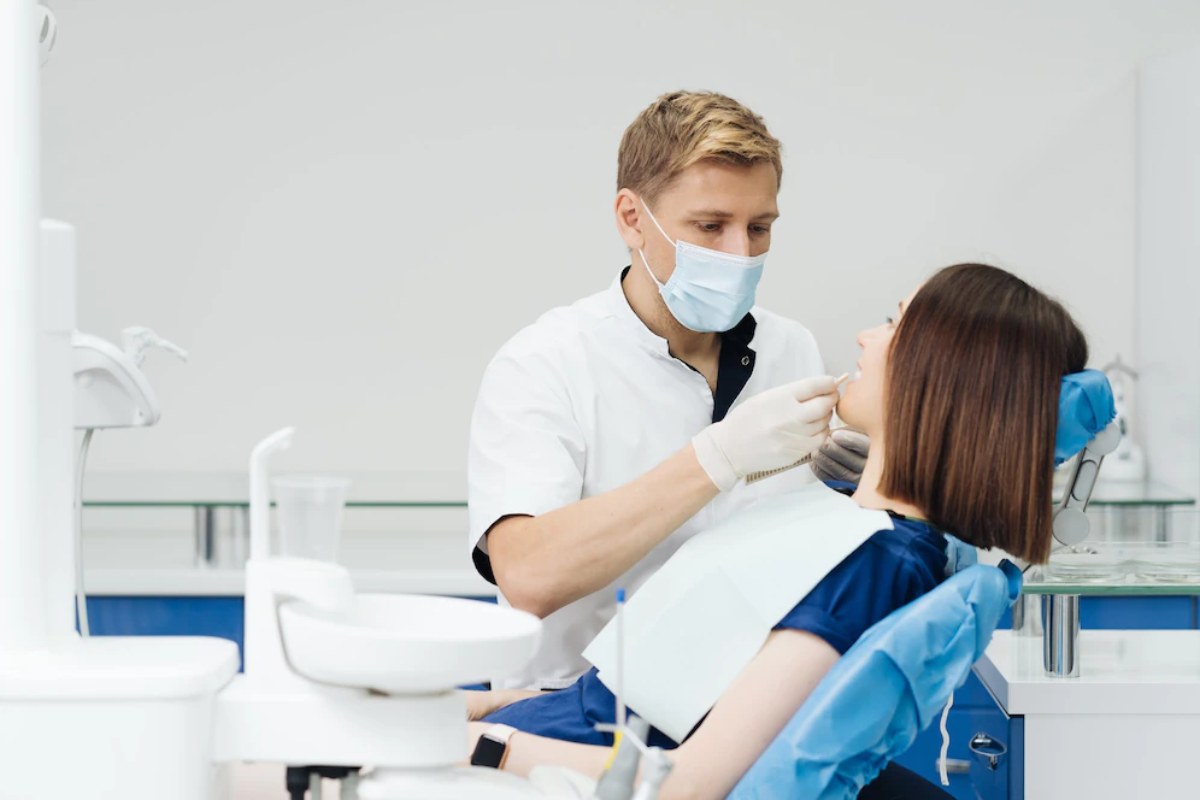Teeth Whitening Treatment: We all want to look youthful as long as we can, but unfortunately ageing is part of life. Even though we all get older, it doesn’t mean we need to let our appearance go and add to the problem. When it comes to how we look, our face and smile are two of the biggest markers for beauty and as such are two of the most common areas people target to look younger.
For your face, Botox injections, brow or face lifts, skin treatments and more are available and can provide some fantastic results. Many treatments are preventative too, like mild Botox to keep skin looking firm. When it comes to your smile, the number one thing people complain about is that their teeth get yellow and discolored. That’s why a teeth whitening treatment is the most common procedure performed at most dental clinics.
We spoke to our dentist at Martindale Dental for their top recommendations of things you need to know before getting your teeth whitened. Keep reading to find out more.
Table of Contents
Freshly cleaned teeth will provide better whitening results
If you have a whitening appointment in your future, it’s recommended to get a professional cleaning done first. The whitening treatment doesn’t work as well when it has to fight through plaque and tarter before it can target your discolored teeth. Scheduling the treatment within a couple weeks of having your teeth cleaned is ideal, because your teeth will still be plaque free at that point.
Make sure your gums are healthy
Even though an in-office whitening treatment is totally safe, there is still a slight risk of gum irritation. This is due to the hydrogen peroxide contained in the whitening gel, which can leave you feeling a bit sore if it gets on your gumline. It’s not dangerous but it is annoying, so making sure your gums aren’t already irritated is a good idea.
Don’t whiten if you have existing dental conditions
If your teeth are already very sensitive, teeth whitening could make the problem worse, at least temporarily. Patients can prep for whitening by using a sensitivity tooth paste for a week prior to make sure their teeth are properly mineralized. This reduces sensitivity after the treatment and can really help patients feel more comfortable.
If you just had any type of oral surgery, including tooth extractions and implants, it’s recommended to hold off on whitening until everything is completely healed up.
Teeth whitening is best for removing surface stains
To understand the effectiveness of teeth whitening, it’s important to know what the process entails. When you get your teeth whitened, your dental hygienist will apply a peroxide solution (gel) to the front facing part of your teeth. This gel penetrates through your tooth enamel to lift surface stains once it gets activated by a UV light. The procedure is best for surface stains and will not be effective against deep staining.
Yellowed teeth respond better to whitening
Patients with yellow stained teeth due to plaque, food, or drink will see better results from whitening than those with teeth that are stained grey or fluorosis. It’s important to have a consultation with your dentist prior to whitening so they can give you a good idea of what results to expect.
Don’t bother trying to whiten veneers, implants or fillings
The color of cosmetic dentistry work like fillings, veneers or implants won’t change during a teeth whitening procedure. This is important to know so you don’t end up with an unsightly dark spot visible where previous restoration work was completed.
Professional whitening results typically last less than a year
You might have heard your dentist refer to whitening as a permanent procedure, so this part can be a bit confusing. Technically, it is permanent, but the thing is that your teeth will immediately begin to acquire stains again naturally. That’s why many in-office treatments will include a take-home kit so patients can perform touch ups every month or so. Keep in mind that it is not recommended to professionally whiten your teeth more than twice a year, otherwise you risk drying out your tooth enamel.
Follow up with a whitening toothpaste
If you want whiter looking teeth, then you’re probably already using a whitening toothpaste. Well, keep using it because these toothpastes are a good way to help maintain your shade after a whitening procedure. A professional whitening, followed up by using a monthly maintenance kit (if provided) and brushing daily with a whitening toothpaste is the best combination to keep your teeth sparkling.
Change your diet
Lastly, to keep your teeth bright, you might want to consider adjusting your diet. That means staying away from any dark beverages that will stain your teeth. This includes drinks like coffee, red wine and dark sodas. It also means foods like blueberries and tomato products. These are of course two super healthy foods, so try and rinse your mouth after you eat them.
It’s especially important to stay completely away from any staining foods or drinks for at least 48 hours after a whitening procedure. Until a couple days after, your tooth enamel will remain porous so stains can penetrate very easily.

